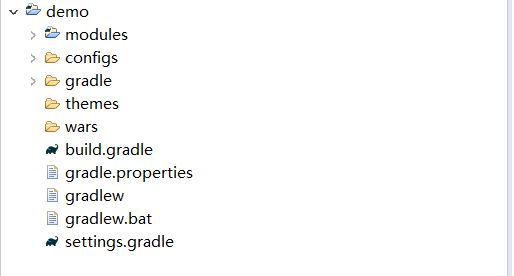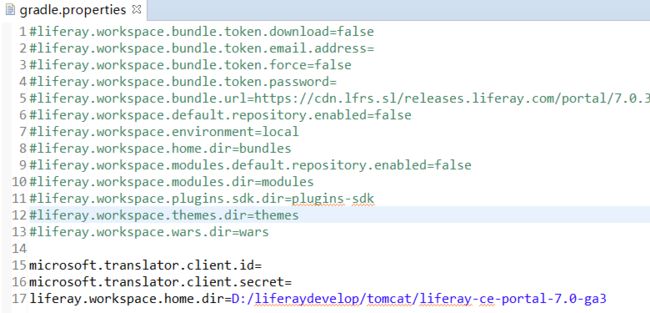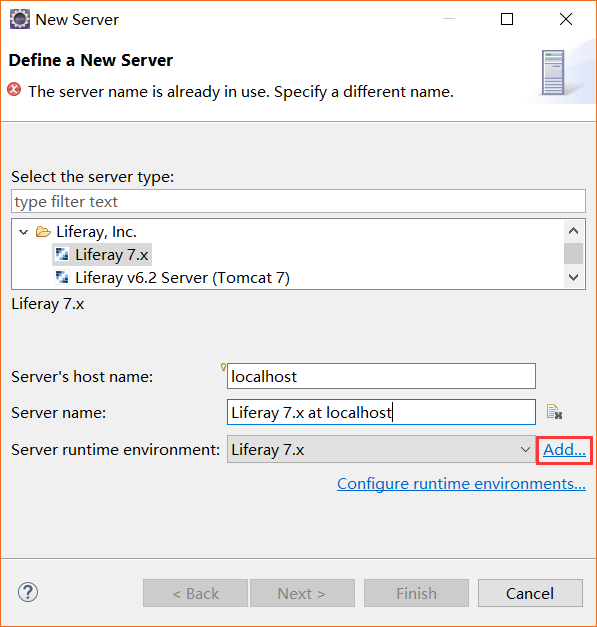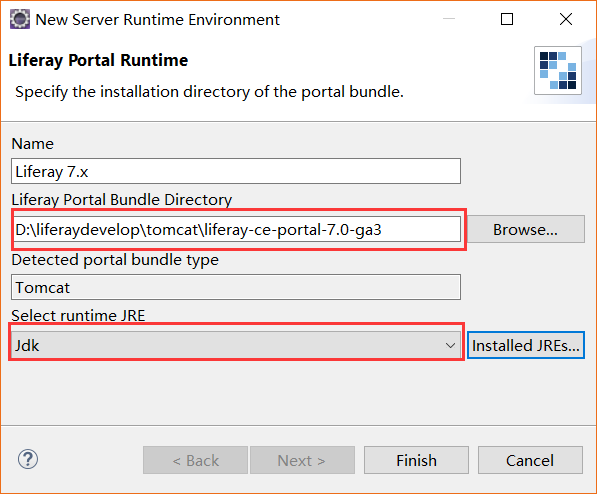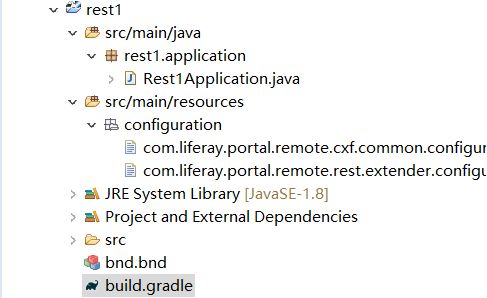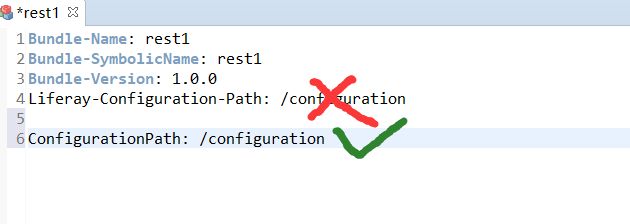- 如何编写一个Spring Boot Starter
一口酥Hac
javaspringboot后端javamaven
文章目录概要创建一个SpringBootStarter的步骤创建一个Maven项目打包并发布在其他项目中使用总结概要写一个SpringBootStarter其实就是封装一部分功能,方便其他项目引入和使用。Starter是SpringBoot提供的一种机制,目的是为了简化配置和模块化开发。一般来说,SpringBootStarter会封装一个特定的功能模块,并自动配置一些常用的组件。通过写一个Sta
- adb 如何导出手机的文件
风继续吹..
工具类Uni-Appadb智能手机uniappsqlite
目录1.开启USB调试2.连接设备3.启动ADB4.导出文件使用adbpull命令5.可视化工具预览adb(AndroidDebugBridge)是Android开发中常用的一个工具,它允许开发者通过电脑与Android设备进行通信。如果你想通过adb导出手机上的文件,你可以按照以下步骤业务需求:前端通过使用uni-app的sqlite(关系型数据库系统),存储了大量的机密数据在手机上,直接通过代
- 【集成学习】:Stacking原理以及Python代码实现
Geeksongs
机器学习python机器学习深度学习人工智能算法
Stacking集成学习在各类机器学习竞赛当中得到了广泛的应用,尤其是在结构化的机器学习竞赛当中表现非常好。今天我们就来介绍下stacking这个在机器学习模型融合当中的大杀器的原理。并在博文的后面附有相关代码实现。总体来说,stacking集成算法主要是一种基于“标签”的学习,有以下的特点:用法:模型利用交叉验证,对训练集进行预测,从而实现二次学习优点:可以结合不同的模型缺点:增加了时间开销,容
- 219.性能优化-内存优化-内存泄漏-本质原因:已经无用的对象未及时回收-非静态内部类
我也念过晚霞
性能优化
━━━━━━━━━━━━━━━━━━━━━━【第一部分:内存泄漏背景与“无用对象未及时回收”的根本原因】在Android开发中,内存资源十分有限,尤其是在手机、平板等设备上。内存泄漏就是指那些本应在不再被使用后被垃圾回收器回收,但由于某种原因任然被引用而无法释放的对象。随着内存中这些无用对象的不断累积,应用会产生以下问题:内存占用逐渐上升,导致应用响应变慢;系统频繁触发垃圾回收(GC),造成卡顿现
- LLMs之minimind:minimind源码解读(pretrain.py)——实现基于Transformer架构的大规模语言模型预训练及wandb监控—支持余弦退火学习率调度/分布式预训练/自动混
一个处女座的程序猿
NLP/LLMsCaseCodetransformerminimind预训练
LLMs之minimind:minimind源码解读(pretrain.py)——实现基于Transformer架构的大规模语言模型预训练及wandb监控—支持余弦退火学习率调度/分布式预训练/自动混合精度优化/梯度累积/梯度裁剪/定期保存模型目录minimind源码解读(pretrain.py)——实现基于Transformer架构的大规模语言模型预训练及wandb监控—支持余弦退火学习率调度/
- Redis 哨兵模式的选举算法是什么?
少林码僧
redissentinel
Redis哨兵模式中的选举算法主要用于在主节点出现故障时,从多个Sentinel节点中选出一个领导者(Leader)来执行故障转移操作。Redis哨兵的选举算法基于Raft算法的简化版本,但不完全等同于标准的Raft算法。以下是其主要过程:一、发现主节点故障当一个Sentinel节点主观地认为主节点不可达时(通常是在一定时间内没有收到主节点的PING回复),它会将主节点标记为主观下线(Subjec
- 初级:数组与字符串面试题深度剖析
佩奇的技术笔记
Java面试小册java
一、引言在Java开发中,数组和字符串是最常用的数据结构之一。面试官通过相关问题考察候选人对数组和字符串的理解和运用能力,以及在实际开发中解决相关问题的经验。本文将深入剖析常见的数组与字符串面试题,结合实际开发场景,帮助读者全面掌握这些知识点。二、数组面试题:如何对数组进行初始化和遍历?答案:数组的初始化可以使用直接初始化、动态初始化等方式。遍历数组可以使用传统的for循环、增强型for循环(fo
- windows使用ssh-copy-id命令的解决方案
爱编程的喵喵
Windows实用技巧windowssshssh-copy-id解决方案
大家好,我是爱编程的喵喵。双985硕士毕业,现担任全栈工程师一职,热衷于将数据思维应用到工作与生活中。从事机器学习以及相关的前后端开发工作。曾在阿里云、科大讯飞、CCF等比赛获得多次Top名次。现为CSDN博客专家、人工智能领域优质创作者。喜欢通过博客创作的方式对所学的知识进行总结与归纳,不仅形成深入且独到的理解,而且能够帮助新手快速入门。 本文主要介绍了windows使用ssh-copy-
- 通过swoole协程实现并发编程
韩淼燃
php7面试架构师swoole协程实现并发编程
目前的Swoole内置了丰富的协程组件供开发者直接调用以便快速实现异步非阻塞的并发编程,省去了开发者自己实现相应底层代码的麻烦:TCP/UDPClient:Swoole\Coroutine\ClientTCP/UDPServer:Swoole\Coroutine\ServerHTTP/WebSocketClient:Swoole\Coroutine\HTTP\ClientHTTP/WebSocke
- webRTC入门示例demo
周末的音视频
webRTCwebrtc音视频
本文主要阐述如何运行webRTC的官方入门示例demo,并简单搭建本地局域网服务器用于测试,可以使得两个手机端可以进行视频通话,感受webRTC的核心功能。一、背景1、webRTC的官方APP的demo下载路径如下:https://github.com/webrtc/apprtcWebRTC官方demo的主代码库里并不包含AndroidStudio工程,因此很多开发人员都不知道如何运行Androi
- Elasticsearch + Docker:实现容器化部署指南
IT成长日记
elasticsearchdocker容器化部署
Elasticsearch是一款强大的分布式搜索和分析引擎,广泛应用于日志分析、全文检索、实时数据分析等场景。而Docker作为一种轻量级的容器化技术,能够帮助开发者快速部署和管理应用。将Elasticsearch与Docker结合,不仅可以简化部署流程,还能提高资源利用率和系统可维护性。1环境准备1.1安装Docker安装操作请参考:Docker入门指南:1分钟搞定安装+常用命令,轻松入门容器化
- 鸿蒙NEXT版实战开发:使用WebRTC进行Web视频会议
那只斑马不睡觉
鸿蒙5.0ArkWebOpenHarmonyharmonyos华为前端androidArkWeb
往期鸿蒙全套实战精彩文章必看内容:鸿蒙开发核心知识点,看这篇文章就够了最新版!鸿蒙HarmonyOSNext应用开发实战学习路线鸿蒙HarmonyOSNEXT开发技术最全学习路线指南鸿蒙应用开发实战项目,看这一篇文章就够了(部分项目附源码)使用WebRTC进行Web视频会议Web组件可以通过W3C标准协议接口拉起摄像头和麦克风。开发者在使用该功能时,需配置ohos.permission.CAMER
- 使用Spring Boot实现分布式任务调度
weixin_836869520
springboot分布式后端
使用SpringBoot实现分布式任务调度大家好,我是微赚淘客系统3.0的小编,是个冬天不穿秋裤,天冷也要风度的程序猿!一、SpringBoot与分布式任务调度概述在分布式系统中,任务调度是一项关键的技术,它能够有效地管理和调度系统中的各种任务,确保任务能够按时执行并具有高可用性和可靠性。SpringBoot作为Java领域流行的开发框架,提供了多种实现分布式任务调度的解决方案。二、SpringB
- C++有哪些高级特性值得学习?
c++
C++是一种功能丰富且复杂的编程语言,其中许多高级特性可以帮助开发者编写更高效、更安全、更灵活的代码。以下是一些值得深入学习的C++高级特性:模板编程(Templates)模板是C++中实现泛型编程的核心机制,允许开发者编写与数据类型无关的代码。模板函数cpp复制templateTmax(Ta,Tb){return(a>b)?a:b;}优点:模板函数可以处理多种数据类型,避免了代码重复。应用场景:
- 鸿蒙开发:ArkTs字符串string
前言本文代码案例基于Api13。字符串在实际的开发中还是非常重要的,牵扯到的用法也是比较多的,比如字符串中的查找,替换,切割等等。字符串(String)是由零个或多个字符组成的有限序列,在计算机编程和数据处理中广泛使用。字符串可以包含字母、数字、标点符号、空格,甚至可以是空字符串(即不包含任何字符的字符串)。字符串是文本信息的基本表示形式,在几乎所有编程语言中都有专门的字符串数据类型或类来处理它们
- 北斗导航 |低轨导航研究进展
单北斗SLAMer
卫星导航人工智能北斗三号GNSS算法低轨导航
低轨导航作为空天信息网络的重要组成部分,近年来在技术研发、系统构建及实际应用方面均取得显著进展。以下是基于最新研究动态的总结:一、技术研发与系统构建低轨导航增强系统技术突破2025年1月,青岛召开的低轨卫星导航增强系统技术发展研讨会汇集了国内26家单位的60名专家,重点讨论了低轨星座与现有导航系统(如北斗、GPS)的融合增强技术。例如:巨型导航星座数字仿真试验系统:国防科技大学刘文祥团队提出通过数
- 基于 Redis 的分布式锁实现与优化
Blossom.118
分布式系统与高性能计算领域redis分布式数据库python3.11算法数据结构推荐算法
在分布式系统中,锁机制是保障数据一致性和并发控制的关键技术之一。Redis作为一种高性能的内存数据库,常被用于实现分布式锁。本文将详细介绍基于Redis的分布式锁的实现原理、代码示例以及优化策略,帮助读者更好地理解和应用这一技术。一、分布式锁的概念与需求在单机系统中,锁的实现相对简单,可以通过操作系统的同步机制或编程语言提供的锁机制来完成。然而,在分布式系统中,多个进程或线程可能运行在不同的机器上
- 摄影工作室预约管理系统基于Spring BootSSM
QQ1978519681计算机程序
springboot后端java毕业设计计算机毕设
目录摘要一、系统架构二、功能模块2.1用户管理模块2.2摄影师管理模块2.3预约管理模块2.4商品管理模块2.5管理员管理模块三.数据库设计四.技术栈五.安全性与性能六.用户界面与体验七.扩展性与可维护性摘要在数字化与信息化飞速发展的当下,人们的生活节奏日益加快,对于各类服务便捷性、高效性的需求也愈发强烈。摄影服务作为记录生活美好瞬间、留存珍贵回忆的重要方式,深受大众喜爱。然而,传统的摄影工作室预
- Yolo系列之Yolo的基本理解
是十一月末
YOLOpython开发语言yolo
YOLO的基本理解目录YOLO的基本理解1YOLO1.1概念1.2算法2单、多阶段对比2.1FLOPs和FPS2.2one-stage单阶段2.3two-stage两阶段1YOLO1.1概念YOLO(YouOnlyLookOnce)是一种基于深度学习的目标检测算法,由JosephRedmon等人于2016年提出。它的核心思想是将目标检测问题转化为一个回归问题,通过一个神经网络直接预测目标的类别和位
- 开发浏览器插件(chrome、edge)
LLLL96
浏览器插件chrome前端浏览器插件下载图片
开发浏览器插件是一个有趣且富有挑战性的项目,可以让你扩展浏览器的功能,提升用户的浏览体验。今天就带大家写一个最简单的下载页面图片的插件。因为chrome和edge使用相同内核,所以开发一款插件,2个浏览器都能用准备工作chrome-要求最新版idea-为什么使用idea,当然是因为代码高亮方便开发开发新建项目file->new->project选择EmptyProject,Name填写chrome
- 从技术宝库到云上机遇:华为云开天aPaaS的“修路记”
脑极体
大数据人工智能物联网区块链编程语言
很多企业在推进数字化、业务上云的时候,都会面临一个两难选择:缺失核心技术容易丧失竞争力,跟不上发展机遇;大力投入核心技术研发,又可能因为开发成本过大,“重复造轮子”而影响进程。无论对于移动开发者还是产业向开发者来说,能够在低门槛、低成本的前提下获得高质量的核心技术,始终都是不变的需求。如何打开一扇从核心技术到云上赋能各领域开发者的门,成为了一项关键挑战。今年上半年,华为高级副总裁、华为云CEO、消
- 高效利用AI处理大型编程任务
大囚长
大模型人工智能
在大型编程任务中,通过将任务细分为适合AI上下文处理能力的子任务并整合生成目标应用,已成为当前AI辅助开发的主流方法。一、任务分解的核心策略模块化功能拆分通过分层架构设计将系统拆分为独立模块(如用户认证、支付接口、数据存储),每个模块的代码量控制在AI模型的上下文窗口内(如ClaudeMax的200k窗口可处理约2万行代码)。例如开发电商系统时,可分解为「购物车逻辑」「库存管理」「订单流水」等子模
- 计算机组成与接口16
落——枫
单片机嵌入式硬件
1.0的表示方法唯一的有补码,移码,ASCII码2.可以多次编程的只读存储器是EPROM,掩膜式ROM3.8259A芯片可设置成脉冲边沿触发方式;全嵌套方式;自动中断结束方式;特殊屏蔽方式4.计算机系统中的总线按层次可以分为板级总线;系统总线;片内总线5.可以或者曾经用作打印机接口的有:RS-232接口;Centronics接口;USB接口6.虚拟存储器对应的地址也叫逻辑地址,虚拟存储器比主存储器
- 基于Spring Boot的分布式任务调度实践
Blossom.118
分布式系统与高性能计算领域wpfspringbootjava后端分布式spring开发语言
在现代的分布式系统中,任务调度是一个常见的需求。无论是定时任务的执行,还是根据业务逻辑动态触发的任务,都需要一个高效、可靠的调度框架来管理。SpringBoot作为目前最流行的Java开发框架之一,提供了强大的依赖管理和快速开发的能力,结合分布式任务调度框架,可以极大地提升开发效率和系统的可维护性。本文将介绍如何基于SpringBoot实现一个分布式任务调度系统,主要涉及Elastic-Job框架
- 鸿蒙开发工程师简历项目撰写全攻略
谢道韫689
鸿蒙随笔harmonyos华为
一、项目结构的黄金法则建议采用「4+1」结构:项目背景(业务价值)+技术架构(鸿蒙特性)+核心实现(技术难点)+个人贡献(量化成果)+附加价值(延伸影响)二、鸿蒙特色技术点提炼技巧鸿蒙核心技术技术维度具体实现案例量化成果示例分布式软总线自定义协议实现家电设备低功耗连接连接成功率从89%提升至97%ArkUI框架基于TS扩展实现动态UI模板引擎开发效率提升40%,代码量减少60%原子化服务实现天气服
- 我要写整个中文互联网界最牛逼的JVM系列教程 | 「JVM与Java体系架构」章节:JVM的生命周期
李阿昀
只要你有心人人都是JVM精通者jvmjava架构
这一讲,我们就来好好谈一谈JVM的生命周期。JVM的生命周期大家做了这么久的开发,应该知道很多的结构其实都有其生命周期吧!而关于JVM的生命周期,这里我们则主要讲述它的三个状态,即虚拟机的启动、虚拟机的执行以及虚拟机的退出,这也是一个结构的生命周期最起码应该具备的三个状态——开始、运行、结束。这就像哲学里面讨论的终极问题一样,我是谁?我从哪里来?我将到哪里去?其实,我觉得先提出我是谁这个问题不太合
- ESP32 智能猫喂水开发日志(RICE/MoSCoW/Kano三种产品路线规划)
天瑜创客
猫喂水项目单片机c++c语言数据结构visualstudiocodeharmonyos
RICE/MoSCoW/Kano三种产品路线的差异分析一、核心定位与适用场景差异1.RICE模型-核心逻辑:通过量化指标(Reach接触量、Impact影响程度、Confidence信心指数、Effort投入精力)计算需求优先级,聚焦资源投入与收益最大化。-适用场景:适用于需要平衡开发成本与预期收益的项目,例如新产品功能迭代或市场推广策略优化。2.MoSCoW模型-核心逻辑:将需求分为四类——Mu
- Android Compose 线性布局(Row、Column)源码深度剖析(十)
&有梦想的咸鱼&
AndroiodCompose原理Android开发大全android
AndroidCompose线性布局(Row、Column)源码深度剖析一、引言在Android应用开发的领域中,UI布局是构建用户界面的核心工作之一。良好的布局设计不仅能提升用户体验,还能使应用在不同设备上保持一致的视觉效果。随着Android开发技术的不断演进,JetpackCompose作为新一代的声明式UI框架应运而生。它以简洁的代码、高效的性能和强大的可维护性,逐渐成为开发者的首选。线性
- 网页版 123 分身数字人源码搭建,OEM贴牌
18538162800=余
音视频矩阵
在数字化时代的浪潮下,数字人技术蓬勃发展,网页版123分身数字人源码搭建为众多开发者和企业提供了实现个性化数字人应用的可能。本文将深入探讨其技术开发过程,从底层架构到关键技术实现,全方位解析如何构建一个功能强大的网页版数字人系统。技术架构设计前端展示层HTML5与CSS3:构建数字人的可视化界面,实现流畅的动画效果和交互元素。利用CSS3的过渡、动画属性,为数字人的动作、表情变化提供细腻的视觉呈现
- 动漫短剧小程序源码|动漫短剧app源码交付
weixin_707762673
小程序php
系统全部开源可二次开发,包部署上线上架,专业的售后团队以及技术服务公司,不转包不外包,完全自研技术团队。今天给大家带来一个超级给力的项目——动漫短剧小程序源码|动漫短剧app源码交付!这不仅是一套完整的解决方案,而且是针对那些想要进入火爆市场领域的朋友们的一把金钥匙!首先说一下背景吧。近年来随着短视频行业的爆发式增长,特别是微短剧、国漫等细分市场的快速崛起,让很多企业和个人看到了新的机会窗口。然而
- Spring4.1新特性——综述
jinnianshilongnian
spring 4.1
目录
Spring4.1新特性——综述
Spring4.1新特性——Spring核心部分及其他
Spring4.1新特性——Spring缓存框架增强
Spring4.1新特性——异步调用和事件机制的异常处理
Spring4.1新特性——数据库集成测试脚本初始化
Spring4.1新特性——Spring MVC增强
Spring4.1新特性——页面自动化测试框架Spring MVC T
- Schema与数据类型优化
annan211
数据结构mysql
目前商城的数据库设计真是一塌糊涂,表堆叠让人不忍直视,无脑的架构师,说了也不听。
在数据库设计之初,就应该仔细揣摩可能会有哪些查询,有没有更复杂的查询,而不是仅仅突出
很表面的业务需求,这样做会让你的数据库性能成倍提高,当然,丑陋的架构师是不会这样去考虑问题的。
选择优化的数据类型
1 更小的通常更好
更小的数据类型通常更快,因为他们占用更少的磁盘、内存和cpu缓存,
- 第一节 HTML概要学习
chenke
htmlWebcss
第一节 HTML概要学习
1. 什么是HTML
HTML是英文Hyper Text Mark-up Language(超文本标记语言)的缩写,它规定了自己的语法规则,用来表示比“文本”更丰富的意义,比如图片,表格,链接等。浏览器(IE,FireFox等)软件知道HTML语言的语法,可以用来查看HTML文档。目前互联网上的绝大部分网页都是使用HTML编写的。
打开记事本 输入一下内
- MyEclipse里部分习惯的更改
Array_06
eclipse
继续补充中----------------------
1.更改自己合适快捷键windows-->prefences-->java-->editor-->Content Assist-->
Activation triggers for java的右侧“.”就可以改变常用的快捷键
选中 Text
- 近一个月的面试总结
cugfy
面试
本文是在学习中的总结,欢迎转载但请注明出处:http://blog.csdn.net/pistolove/article/details/46753275
前言
打算换个工作,近一个月面试了不少的公司,下面将一些面试经验和思考分享给大家。另外校招也快要开始了,为在校的学生提供一些经验供参考,希望都能找到满意的工作。
- HTML5一个小迷宫游戏
357029540
html5
通过《HTML5游戏开发》摘抄了一个小迷宫游戏,感觉还不错,可以画画,写字,把摘抄的代码放上来分享下,喜欢的同学可以拿来玩玩!
<html>
<head>
<title>创建运行迷宫</title>
<script type="text/javascript"
- 10步教你上传githib数据
张亚雄
git
官方的教学还有其他博客里教的都是给懂的人说得,对已我们这样对我大菜鸟只能这么来锻炼,下面先不玩什么深奥的,先暂时用着10步干净利索。等玩顺溜了再用其他的方法。
操作过程(查看本目录下有哪些文件NO.1)ls
(跳转到子目录NO.2)cd+空格+目录
(继续NO.3)ls
(匹配到子目录NO.4)cd+ 目录首写字母+tab键+(首写字母“直到你所用文件根就不再按TAB键了”)
(查看文件
- MongoDB常用操作命令大全
adminjun
mongodb操作命令
成功启动MongoDB后,再打开一个命令行窗口输入mongo,就可以进行数据库的一些操作。输入help可以看到基本操作命令,只是MongoDB没有创建数据库的命令,但有类似的命令 如:如果你想创建一个“myTest”的数据库,先运行use myTest命令,之后就做一些操作(如:db.createCollection('user')),这样就可以创建一个名叫“myTest”的数据库。
一
- bat调用jar包并传入多个参数
aijuans
下面的主程序是通过eclipse写的:
1.在Main函数接收bat文件传递的参数(String[] args)
如: String ip =args[0]; String user=args[1]; &nbs
- Java中对类的主动引用和被动引用
ayaoxinchao
java主动引用对类的引用被动引用类初始化
在Java代码中,有些类看上去初始化了,但其实没有。例如定义一定长度某一类型的数组,看上去数组中所有的元素已经被初始化,实际上一个都没有。对于类的初始化,虚拟机规范严格规定了只有对该类进行主动引用时,才会触发。而除此之外的所有引用方式称之为对类的被动引用,不会触发类的初始化。虚拟机规范严格地规定了有且仅有四种情况是对类的主动引用,即必须立即对类进行初始化。四种情况如下:1.遇到ne
- 导出数据库 提示 outfile disabled
BigBird2012
mysql
在windows控制台下,登陆mysql,备份数据库:
mysql>mysqldump -u root -p test test > D:\test.sql
使用命令 mysqldump 格式如下: mysqldump -u root -p *** DBNAME > E:\\test.sql。
注意:执行该命令的时候不要进入mysql的控制台再使用,这样会报
- Javascript 中的 && 和 ||
bijian1013
JavaScript&&||
准备两个对象用于下面的讨论
var alice = {
name: "alice",
toString: function () {
return this.name;
}
}
var smith = {
name: "smith",
- [Zookeeper学习笔记之四]Zookeeper Client Library会话重建
bit1129
zookeeper
为了说明问题,先来看个简单的示例代码:
package com.tom.zookeeper.book;
import com.tom.Host;
import org.apache.zookeeper.WatchedEvent;
import org.apache.zookeeper.ZooKeeper;
import org.apache.zookeeper.Wat
- 【Scala十一】Scala核心五:case模式匹配
bit1129
scala
package spark.examples.scala.grammars.caseclasses
object CaseClass_Test00 {
def simpleMatch(arg: Any) = arg match {
case v: Int => "This is an Int"
case v: (Int, String)
- 运维的一些面试题
yuxianhua
linux
1、Linux挂载Winodws共享文件夹
mount -t cifs //1.1.1.254/ok /var/tmp/share/ -o username=administrator,password=yourpass
或
mount -t cifs -o username=xxx,password=xxxx //1.1.1.1/a /win
- Java lang包-Boolean
BrokenDreams
boolean
Boolean类是Java中基本类型boolean的包装类。这个类比较简单,直接看源代码吧。
public final class Boolean implements java.io.Serializable,
- 读《研磨设计模式》-代码笔记-命令模式-Command
bylijinnan
java设计模式
声明: 本文只为方便我个人查阅和理解,详细的分析以及源代码请移步 原作者的博客http://chjavach.iteye.com/
import java.util.ArrayList;
import java.util.Collection;
import java.util.List;
/**
* GOF 在《设计模式》一书中阐述命令模式的意图:“将一个请求封装
- matlab下GPU编程笔记
cherishLC
matlab
不多说,直接上代码
gpuDevice % 查看系统中的gpu,,其中的DeviceSupported会给出matlab支持的GPU个数。
g=gpuDevice(1); %会清空 GPU 1中的所有数据,,将GPU1 设为当前GPU
reset(g) %也可以清空GPU中数据。
a=1;
a=gpuArray(a); %将a从CPU移到GPU中
onGP
- SVN安装过程
crabdave
SVN
SVN安装过程
subversion-1.6.12
./configure --prefix=/usr/local/subversion --with-apxs=/usr/local/apache2/bin/apxs --with-apr=/usr/local/apr --with-apr-util=/usr/local/apr --with-openssl=/
- sql 行列转换
daizj
sql行列转换行转列列转行
行转列的思想是通过case when 来实现
列转行的思想是通过union all 来实现
下面具体例子:
假设有张学生成绩表(tb)如下:
Name Subject Result
张三 语文 74
张三 数学 83
张三 物理 93
李四 语文 74
李四 数学 84
李四 物理 94
*/
/*
想变成
姓名 &
- MySQL--主从配置
dcj3sjt126com
mysql
linux下的mysql主从配置: 说明:由于MySQL不同版本之间的(二进制日志)binlog格式可能会不一样,因此最好的搭配组合是Master的MySQL版本和Slave的版本相同或者更低, Master的版本肯定不能高于Slave版本。(版本向下兼容)
mysql1 : 192.168.100.1 //master mysq
- 关于yii 数据库添加新字段之后model类的修改
dcj3sjt126com
Model
rules:
array('新字段','safe','on'=>'search')
1、array('新字段', 'safe')//这个如果是要用户输入的话,要加一下,
2、array('新字段', 'numerical'),//如果是数字的话
3、array('新字段', 'length', 'max'=>100),//如果是文本
1、2、3适当的最少要加一条,新字段才会被
- sublime text3 中文乱码解决
dyy_gusi
Sublime Text
sublime text3中文乱码解决
原因:缺少转换为UTF-8的插件
目的:安装ConvertToUTF8插件包
第一步:安装能自动安装插件的插件,百度“Codecs33”,然后按照步骤可以得到以下一段代码:
import urllib.request,os,hashlib; h = 'eb2297e1a458f27d836c04bb0cbaf282' + 'd0e7a30980927
- 概念了解:CGI,FastCGI,PHP-CGI与PHP-FPM
geeksun
PHP
CGI
CGI全称是“公共网关接口”(Common Gateway Interface),HTTP服务器与你的或其它机器上的程序进行“交谈”的一种工具,其程序须运行在网络服务器上。
CGI可以用任何一种语言编写,只要这种语言具有标准输入、输出和环境变量。如php,perl,tcl等。 FastCGI
FastCGI像是一个常驻(long-live)型的CGI,它可以一直执行着,只要激活后,不
- Git push 报错 "error: failed to push some refs to " 解决
hongtoushizi
git
Git push 报错 "error: failed to push some refs to " .
此问题出现的原因是:由于远程仓库中代码版本与本地不一致冲突导致的。
由于我在第一次git pull --rebase 代码后,准备push的时候,有别人往线上又提交了代码。所以出现此问题。
解决方案:
1: git pull
2:
- 第四章 Lua模块开发
jinnianshilongnian
nginxlua
在实际开发中,不可能把所有代码写到一个大而全的lua文件中,需要进行分模块开发;而且模块化是高性能Lua应用的关键。使用require第一次导入模块后,所有Nginx 进程全局共享模块的数据和代码,每个Worker进程需要时会得到此模块的一个副本(Copy-On-Write),即模块可以认为是每Worker进程共享而不是每Nginx Server共享;另外注意之前我们使用init_by_lua中初
- java.lang.reflect.Proxy
liyonghui160com
1.简介
Proxy 提供用于创建动态代理类和实例的静态方法
(1)动态代理类的属性
代理类是公共的、最终的,而不是抽象的
未指定代理类的非限定名称。但是,以字符串 "$Proxy" 开头的类名空间应该为代理类保留
代理类扩展 java.lang.reflect.Proxy
代理类会按同一顺序准确地实现其创建时指定的接口
- Java中getResourceAsStream的用法
pda158
java
1.Java中的getResourceAsStream有以下几种: 1. Class.getResourceAsStream(String path) : path 不以’/'开头时默认是从此类所在的包下取资源,以’/'开头则是从ClassPath根下获取。其只是通过path构造一个绝对路径,最终还是由ClassLoader获取资源。 2. Class.getClassLoader.get
- spring 包官方下载地址(非maven)
sinnk
spring
SPRING官方网站改版后,建议都是通过 Maven和Gradle下载,对不使用Maven和Gradle开发项目的,下载就非常麻烦,下给出Spring Framework jar官方直接下载路径:
http://repo.springsource.org/libs-release-local/org/springframework/spring/
s
- Oracle学习笔记(7) 开发PLSQL子程序和包
vipbooks
oraclesql编程
哈哈,清明节放假回去了一下,真是太好了,回家的感觉真好啊!现在又开始出差之旅了,又好久没有来了,今天继续Oracle的学习!
这是第七章的学习笔记,学习完第六章的动态SQL之后,开始要学习子程序和包的使用了……,希望大家能多给俺一些支持啊!
编程时使用的工具是PLSQL

